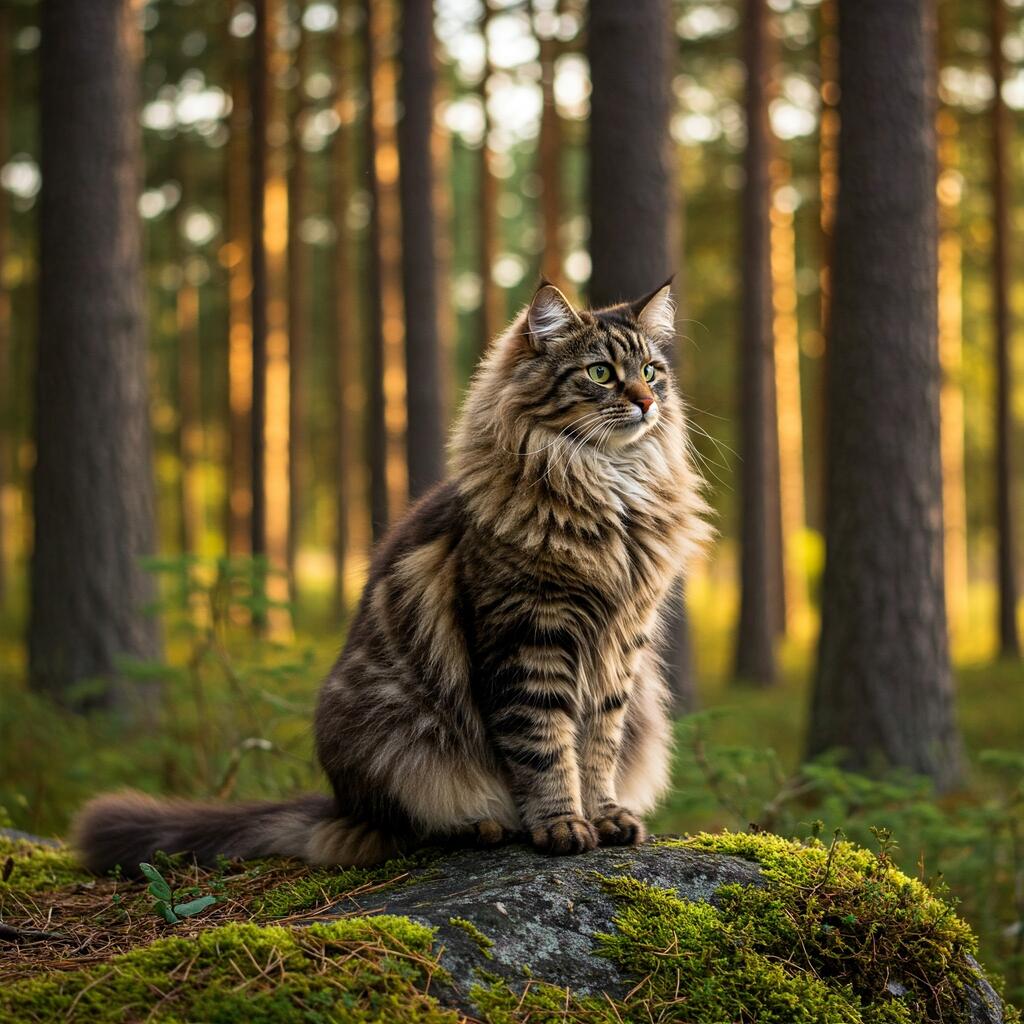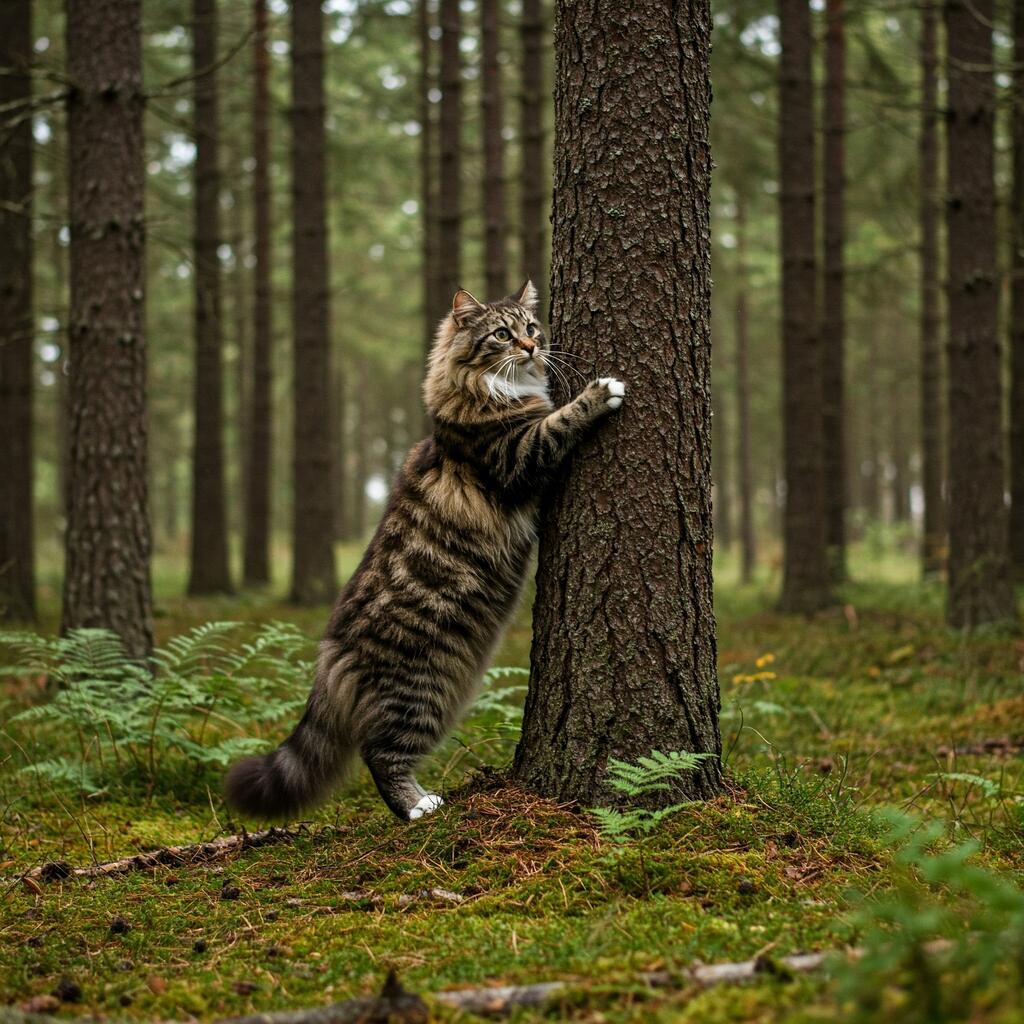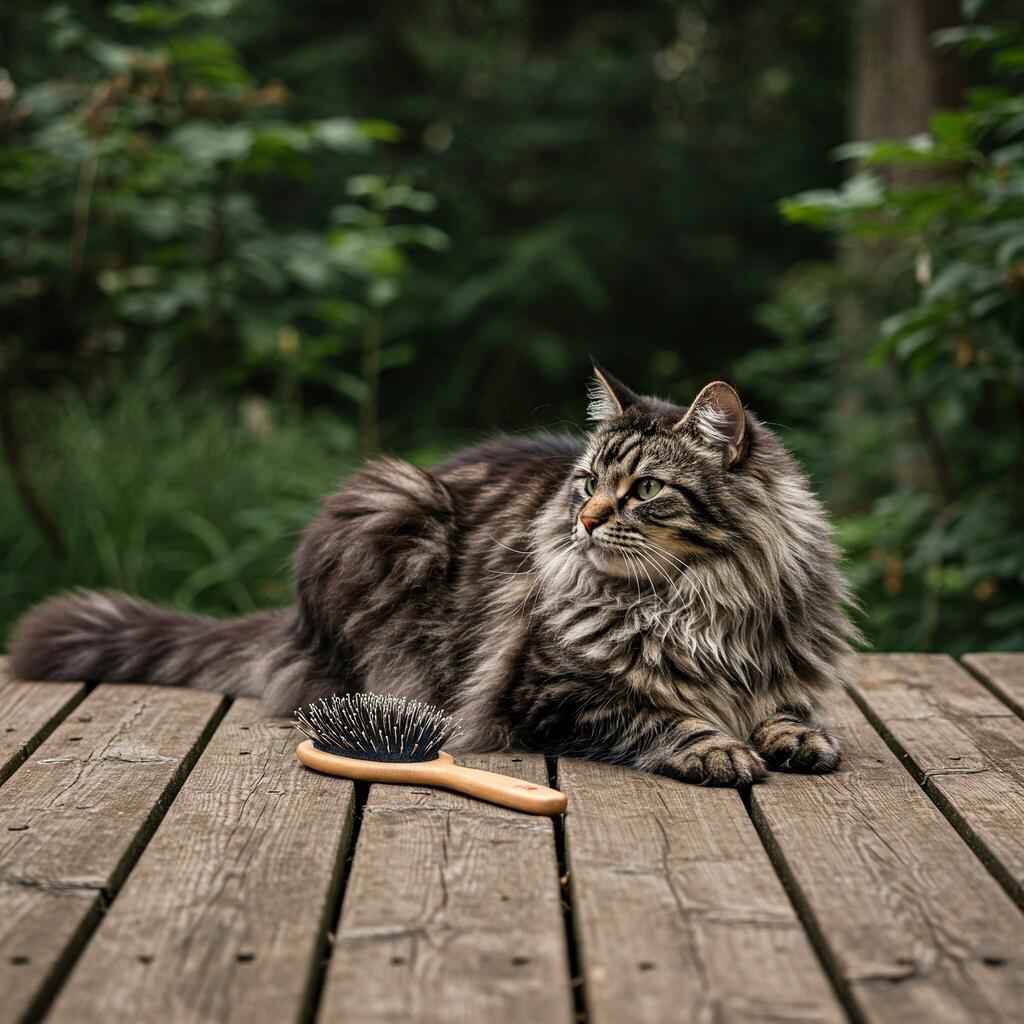
Exploring the Majestic Cat of the Norwegian Forests
The origin of the majestic Cat of the Norwegian Forests goes back as far as the Vikings, by whom it was considered sacred. They kept it at home or even carried it on their ships because it was an excellent mouse hunter.
There are many legends where we can find this particular breed of cat. In fact, it is said that the god Thor raised a large specimen to demonstrate his strength and the fertility goddess Freia, went around the world in search of love on a chariot pulled by these muscular cats.
It is a highly valued animal for being majestic and elegant and for its very sociable nature. It is a great hunter and is not afraid of cold, snow and mud. The Norwegian exudes an impression of strength, tranquillity and balance.
Character of the Cat of the Norwegian Forests

It is an intelligent, affectionate and playful cat. It can effortlessly open doors and sometimes even refrigerators, it gets along well with children and does not like to be left alone often, it needs attention and daily play sessions.
He never pulls out his nails, nor does he bite except for play and very gently. He is not made for flat life alone, he needs to climb, run and move around, so a secured garden from which he cannot leave is his natural habitat for his playtime, but he also loves the comfortable, warm home life.
Unlike other felines he loves water, a basin can entertain him alone and he is enchanted to see a trickle of water coming out of the tap. He has a melodious and sweet voice and can modulate it very well until his requests, whether for play, food or cuddles, are understood.
In northern Europe, where it is best known, it is also called a dog-cat, due to its character similarity to the dog. If habituated from an early age, it can be easily led on a leash. It is a little shy with strangers but very prone to making friends easily.
Appearance and care for the Cat of the Norwegian Forests

It is long and robustly built with the hind legs higher than the front ones. The toes are broad and webbed to facilitate movement in the snow. Long tufts of fur enrich the outer edge of the muzzle, descending below the cheeks to form a thick collar on the chest similar to a large beard called a ruff.
This is why it appears to have a very thick mane. It can be two-coloured, three-coloured, uniform. In fact, for this breed there are no coats not allowed in the colours. Its ears are large and pointed with thick tufts of hair inside.
Its coat is water-repellent, which is also why it is a cat that particularly likes water. It loses very little hair and to care for it, it only needs to be brushed a couple of times a week.
It is a natural breed and therefore very robust and healthy, but the breeders' selection must be very scrupulous as they can develop hereditary diseases. His diet is not very strict, he is not a cat that tends to overeat and he is fine with both wet and kibble, fish and meat.
The only thing not to give him is rice, as it can trigger even strong allergic reactions. This breed has a very long life expectancy, ranging from 14 to 16 years and even longer.






















